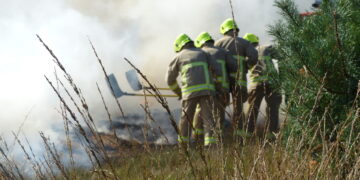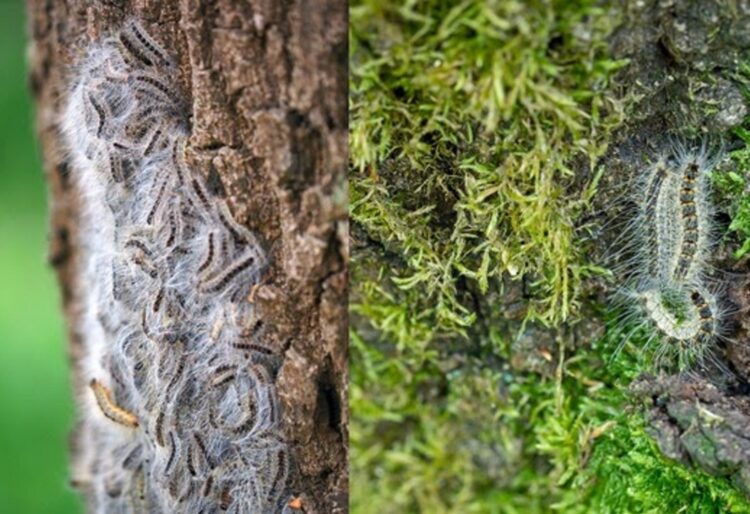A HAIRY caterpillar that not only damages trees, but which can also cause allergic reactions in people and pets, is on the rise in the UK.
Borough residents are asked to keep an eye out for oak processionary moth (OPM) caterpillars, which can strip an oak tree of its leaves and cause an unpleasant reaction in those who touch them.
The caterpillars (thaumetopoea processionea) feed on several species of oak, and large infestations can make trees vulnerable to drought and disease.
Why does this matter?
Wokingham enjoys an abundance of oaks, so this pest could do some damage in the borough.
A protein in the caterpillars’ hairs can cause rashes, eye irritation, sore throat, and breathing difficulty in humans and livestock.
Originally from central and southern Europe, the oak processionary moth has gradually moved northwards.
Climate warming, and a trade in live trees have both helped it expand its range to include Germany, the Netherlands, and the UK.
It first appeared in West London in 2006, almost certainly imported as eggs on live oaks from continental Europe.
It is now an established pest in London and the surrounding areas, and the UK government is currently running a surveillance and control programme to try and minimise its population and spread.
Wokingham.Today understands that although the moth has not yet been spotted in Wokingham borough, a nest has been found in Bracknell.
Experts suggest various possible measures to control it, but until the pest does arrive, it has been reported that there is no obligation to put any of these into practice.
For now, people are asked to be vigilant.
What to look out for:
The moths themselves are not easy to identify, and don’t present any danger – there is no need to report these.
People are asked to report any sightings of the caterpillars, which are active from May through to August.
They have a habit of moving about in nose-to-tail processions, from where they get their name.
Processions can resemble an arrow head, with one leader followed by rows of several caterpillars all moving together.
Their grey bodies (with black head) are covered in distinctive very long white hairs.
The creatures are usually found on oak trees, or processing on the ground between them.
People may also spot nests of white silky webbing, with streaks of silken trails, on the trunks and branches of oak trees.
These can be half a ball-shaped, teardrop shaped, or blanket-like stretched round an oak branch or trunk.
They may be just a few centimetres across, or stretch across several feet.
They can be found high in the tree, low down the trunk, or they may even drop to the ground.
Any OPM nests should be reported rapidly, but nests on any other trees, fences or garden furniture are harmless, made by other insects, and don’t need to be reported.
What risks do OPM caterpillars pose?
The danger to humans and animals comes from their thousands of tiny hairs,which they shed in the wind, and when disturbed.
These can get onto skin, in the eyes, and even into the lungs, where they cause irritation.
Children, pets, those who work with or near infested oak trees, and grazing stock and wildlife are all vulnerable to the health hazard.
People are advised to teach children what to look out for, and to warn them not to approach, touch, or try to remove OPM nests or caterpillars.
Even empty nests can contain large numbers of hairs.
Pets and livestock should be kept at a safe distance from infested oaks, and tree surgeons, landscapers and forestry workers should wear full protective clothing.
People developing a serious allergic reaction should see a doctor or pharmacist, while seriously affected animals should be seen by a vet.
How to report a sighting:
People are asked to report any suspected sightings (even empty nests) of OPM immediately, by visiting:
www.treealert.forestresearch.gov.uk
For more information, call: 0300 200 7847 or email: [email protected].
A Forestry Commission information video,The Dangers Of Oak Processionary Moth, can be found at: www.youtube.com
And an OPMoth information leaflet can be downloaded from: www.assets.publishing.service.gov.uk














































